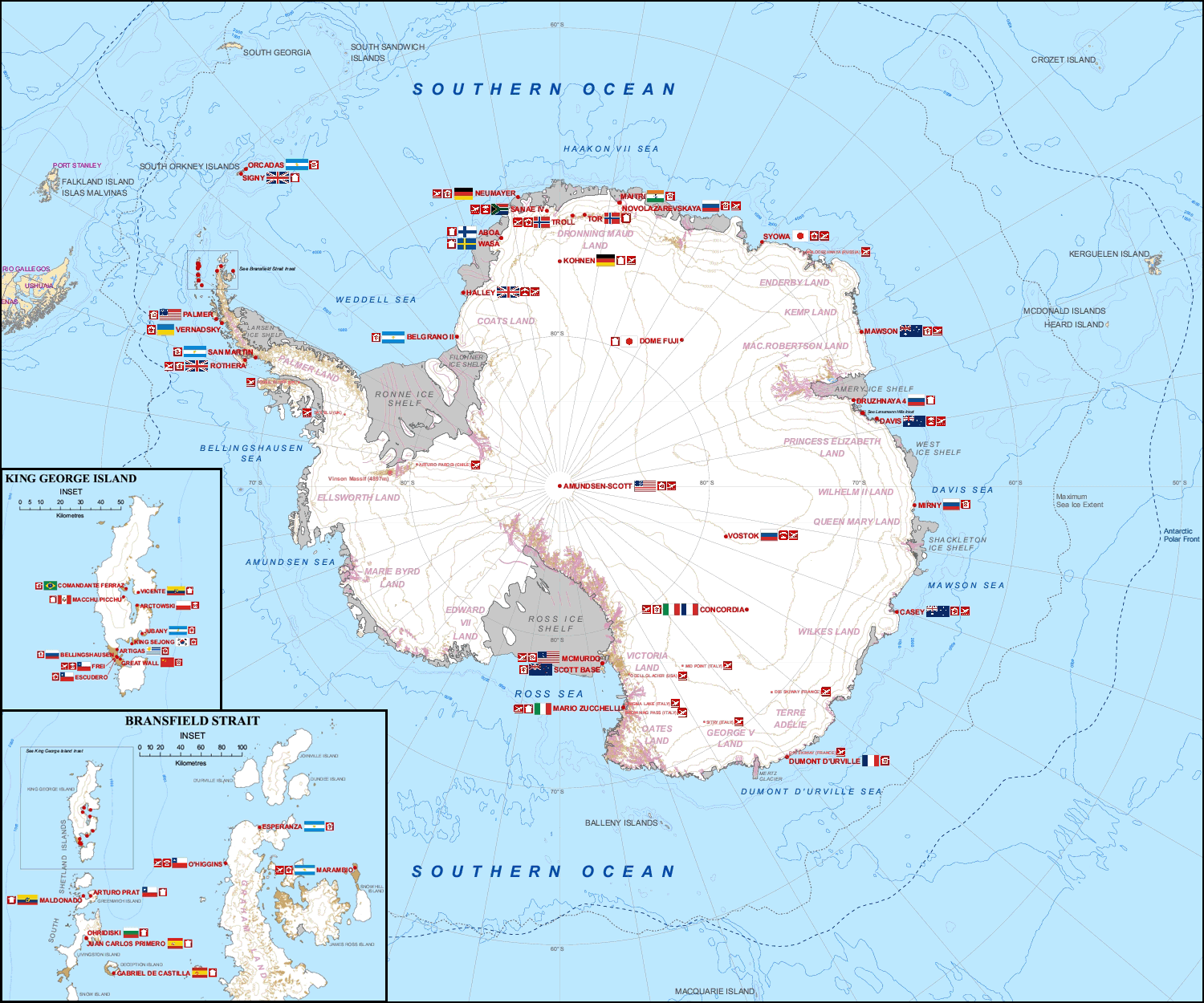|
Kohnen Station
Kohnen-Station is a German summer-only polar research station in the Antarctic, able to accommodate up to 28 people. It is named after the geophysicist Heinz Kohnen (1938–1997), who was for a long time the head of logistics at the Alfred Wegener Institute. The station opened on January 11, 2001, in Dronning Maud Land. The station is located at 75°00'S, 00°04'E, and 2892 m above sea level. It is located 757 km southeast of Neumayer-Station III, which lies on the Ekstrom Ice Shelf and provides logistics and administration for Kohnen-Station. Like the United Kingdom's Halley V station, the base is built on steel legs allowing the station to be jacked up as the height of the snow surface increases. The station contains a radio room, a mess room, a kitchen, bathrooms, two bedrooms, a snow melter, a store, a workshop, and a power plant (100 kW). It is supplied by a convoy of 6 towing vehicles, which carry up to 20 tons each, and 17 sledges. The base is resupplied ... [...More Info...] [...Related Items...] OR: [Wikipedia] [Google] [Baidu] |
Research Stations In Antarctica
Multiple governments have set up permanent research stations in Antarctica and these bases are widely distributed. Unlike the drifting ice stations set up in the Arctic, the research stations of the Antarctic are constructed either on rock or on ice that is (for practical purposes) fixed in place. Many of the stations are demographics of Antarctica, staffed throughout the year. A total of 42 countries (as of October 2006), all signatories to the Antarctic Treaty System, Antarctic Treaty, operate seasonal (summer) and year-round research stations on the continent. The population of people performing and supporting scientific research on the continent and nearby islands varies from approximately 4,000 during the summer season to 1,000 during winter (June). In addition to these permanent stations, approximately Antarctic field camps, 30 field camps are established each summer to support specific projects. History First bases During the Heroic Age of Antarctic Exploration in t ... [...More Info...] [...Related Items...] OR: [Wikipedia] [Google] [Baidu] |
Snowcats
A snowcat (short for snow and caterpillar) is an enclosed-cab, truck-sized, fully tracked vehicle designed to move on snow. Major manufacturers are Pisten Bully (Germany), Prinoth (Italy) and Tucker (United States). Snow groomers A snowcat dedicated to snow maintenance rather than transport is a snow groomer. Other terms are "piste machines", "trail groomers" (in North American English) or "piste bashers" (in British English) because of their use in preparing ski trails ("pistes") or snowmobile trails. Other functions In addition to grooming snow they are used for polar expeditions, logging in marsh areas, leveling sugar beet piles, medical evacuations and seismic studies in the wild. Construction Most snowcats, such as the ones produced by Bombardier or Aktiv in the past, have two sets of tracks, fitted with a Christie suspension or a Horstmann suspension. Others, like the Tucker Sno-Cat and Hägglunds ''Bandvagn 206'' vehicles, have a complex arrangement of four or m ... [...More Info...] [...Related Items...] OR: [Wikipedia] [Google] [Baidu] |
Princess Martha Coast
Princess Martha Coast ( no, Kronprinsesse Märtha Kyst) is that portion of the coast of Queen Maud Land lying between 05° E and the terminus of Stancomb-Wills Glacier, at 20° W. The entire coastline is bounded by ice shelves with ice cliffs high. Princess Martha Coast was the first portion of Antarctic mainland discovered by a human, Fabian von Bellingshausen and Mikhail Lazarev in 1820. The name "Crown Princess Martha Land" was originally applied by Capt. Hjalmar Riiser-Larsen to that section of the coast in the vicinity of Cape Norvegia which he discovered from the ''Norvegia'' and roughly charted from the air during February 1930. On January 19, 1939, Nazi Germany reached the Martha Coast which was a part of the German Antarctic Expedition. It is named in honour of Crown Princess Märtha of Norway. Troll is located in the eastern part, from the coast. Explora Escarpment Explora Escarpment () is an undersea escarpment named for the Antarctic science ship ''F.S. E ... [...More Info...] [...Related Items...] OR: [Wikipedia] [Google] [Baidu] |
Germany And The Antarctic
Germany,, officially the Federal Republic of Germany, is a country in Central Europe. It is the List of European countries by population, second most populous country in Europe after Russia, and the most populous member state of the European Union. Germany is situated between the Baltic Sea, Baltic and North Sea, North seas to the north, and the Alps to the south; it covers an area of , with a population of almost 84 million within its 16 States of Germany, constituent states. Germany borders Denmark to the north, Poland and the Czech Republic to the east, Austria and Switzerland to the south, and France, Luxembourg, Belgium, and the Netherlands to the west. The nation's capital and List of cities in Germany by population, most populous city is Berlin and its financial centre is Frankfurt; the largest urban area is the Ruhr. Various Germanic peoples, Germanic List of ancient Germanic peoples, tribes have inhabited the northern parts of modern Germany since classical anti ... [...More Info...] [...Related Items...] OR: [Wikipedia] [Google] [Baidu] |

